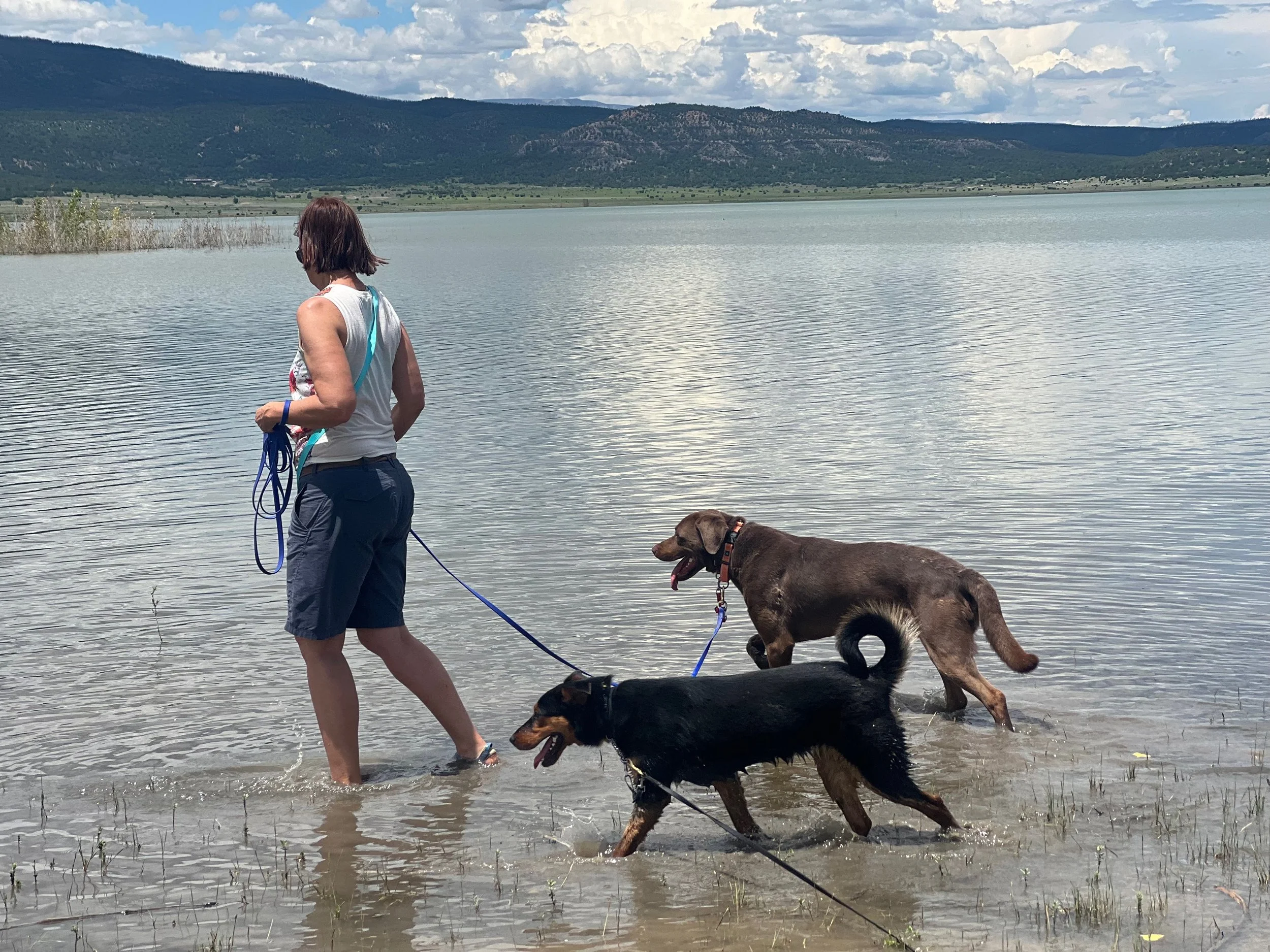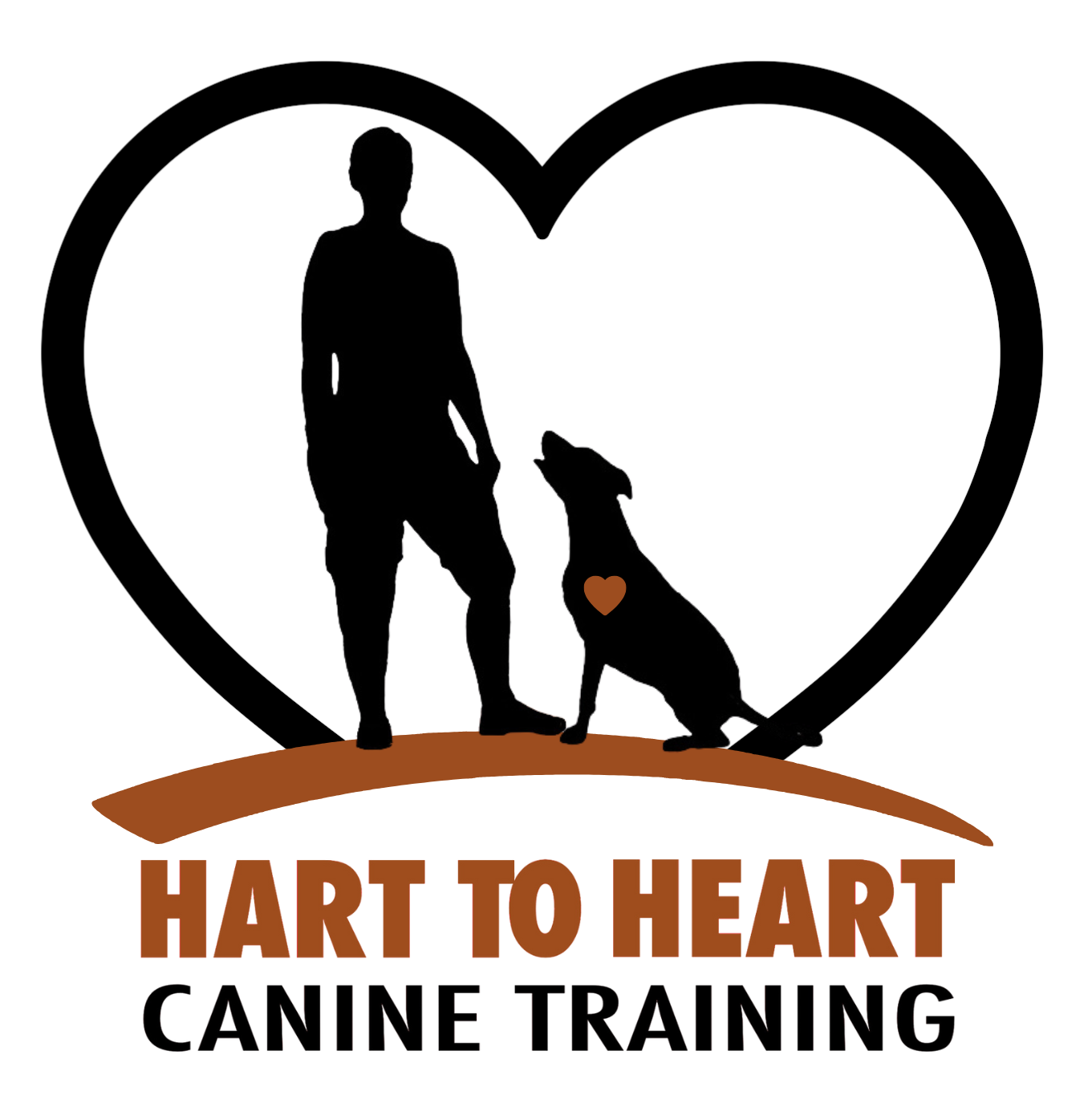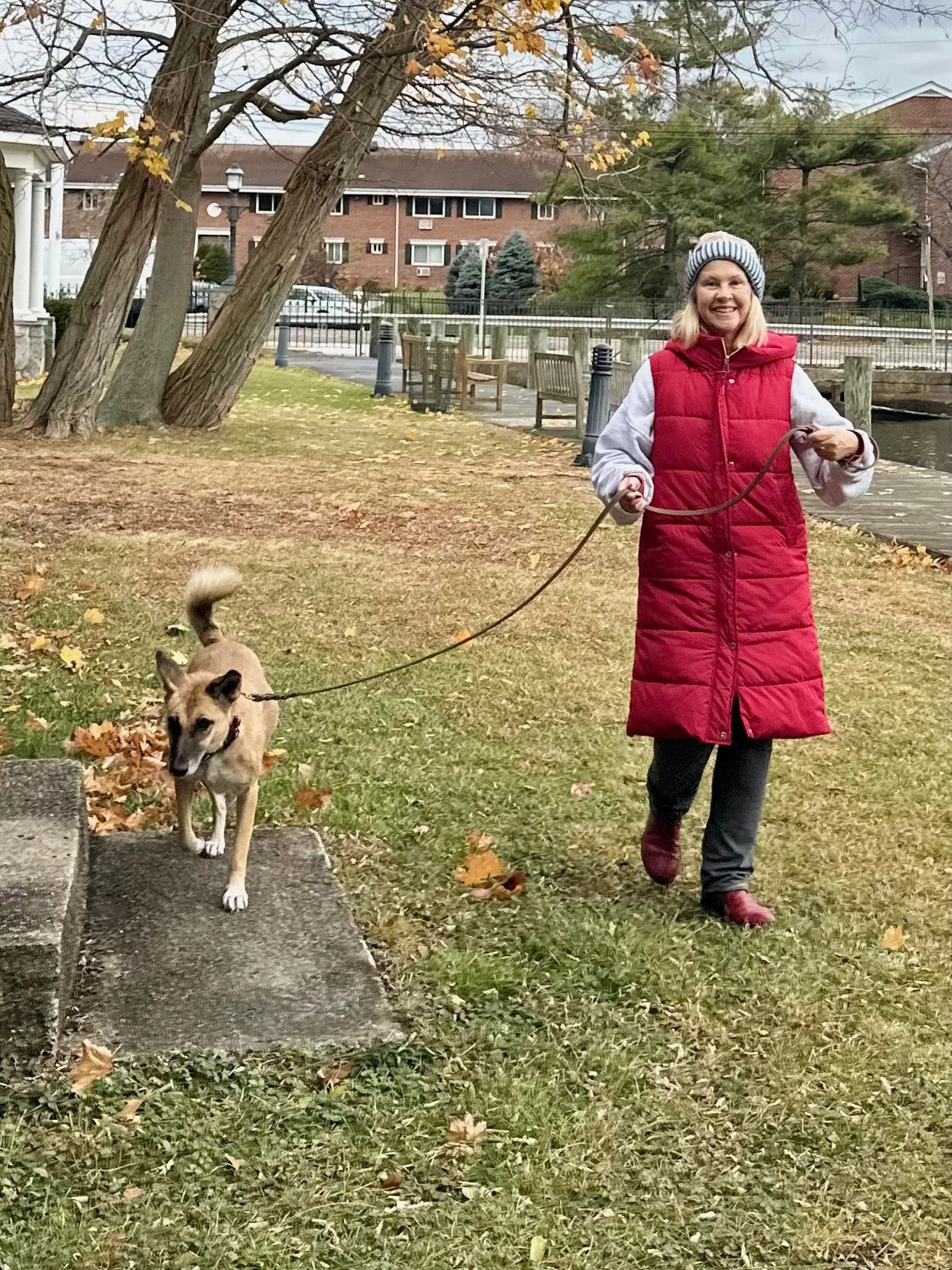
Fearful & Feral Dog Rehabilitation
Want to Truly connect with your Fearful dog?
Let’s raise the bar on fearful and feral dog rehab. Learn how to help your dog to be comfortable with you and other people, be happy to have a leash put on and go for a walk, like to be touched, come when called, not hide in the house or yard, and live a fulfilling life with a higher level of welfare, all within a reasonable amount of time, you are in the right place.
Training alone doesn't equate to trust, especially for dogs who have endured trauma from hoarding situations, abuse, or neglect, or those who were once street dogs or feral roamers. These dogs need compassionate guidance and unwavering support to return to their natural behaviors. Dogs need their humans to become trustworthy, so they do not have to live in fear. This has little to do with typical “training’ methods, but relies on a trusting relationship between dog and human. I build trust with dogs through safety, authenticity, empathy, and the creation of fear-free behavior.
The typical training advice for fearful and feral dogs fails to build trust and create a deep, meaningful relationship.
Traditional training methods often fail to address the unique needs of fearful and feral dogs. With scarce resources available in this specialized area, many trainers, rescuers, and dog parents find themselves at a loss when it comes to rehabilitating these vulnerable animals.
I get called after people have been unsuccessful in finding help for their dog, and may have hired a trainer who didn’t provide significant improvement. Many people feel hopeless when they contact me, thinking their dog cannot improve. I get the pleasure of reassuring them that, indeed, their dog can improve, and I can teach them how.
From working with fearful and feral dogs, I have developed the Nose-Centric™ system.
This approach uniquely optimizes a dog’s natural behaviors, especially sniffing, to aid in recovery. Dogs engaging in their natural activities boost dopamine, serotonin, and other feel-good hormones in the body. By doing these activities WITH your dog, rather than just standing there, you become relatable and important in that dog’s life.
I've honed in on what truly works in transforming fearful and feral dogs into happy, thriving companions, by drawing from extensive hands-on experience in foster, rescue, client, and shelter environments, and it isn’t what you may think!
By working with me, you'll gain invaluable insights and techniques that transcend traditional training dogmas.
What trainers, rescuers, and dog parents learn from working with these resilient animals not only transforms the lives of fearful and feral dogs but also enhances their ability to serve all their clients’ and dogs’ needs – including the more "typical" ones. From communication cues to trust-building techniques, the lessons fearful and feral dogs have taught me have personally empowered me to teach all dogs better, resulting in happier, more well-adjusted canine companions.
My typical timeline for feral dog rehab is:
Walking on a leash in 2 to 3 30-minute sessions.
Participate freely in my household routine, which takes about three weeks.
Go to places like parks, it takes about four weeks.
In about three months, Vet visits, getting in the car, coming when called, and enjoying having a leash put on.
Over the next few months, we will expand on this so the dog becomes comfortable with people outside my household, going on trips, visiting pet stores, home improvement stores, and more.
My ex-feral dog, Tipton, has gone to Las Vegas, staying two blocks from The Strip, the Grand Canyon, family road trips, and Yellowstone.
Many trainers will not believe this timeline is possible because they do not understand how to build trust with a fearful or feral dog, nor do they have the experience I do.
The possibilities are endless if we don’t limit our dog’s ability to succeed.
Client with her previous Israeli street dog
The dogs I rehabilitate are thriving.
They are not merely surviving by living in a small world and secluded in a house or yard. The dogs I work with live like normal dogs, going on walks and hikes, to pet stores, and on vacations. They joyfully come when called and enjoy affection from their people.
MORE ABOUT TIPTON My ex-feral dog, Tipton, has gone to Las Vegas, staying two blocks from The Strip, the Grand Canyon, family road trips, and Yellowstone.
MORE ABOUT THE ISRAELI DOG
To bring fearful and feral dogs into a human world, we must first enter theirs.
Getting a fearful dog to use its nose is an often-overlooked powerhouse of rehabilitation potential. These dogs are truly inspirational and have taught me so much. I owe it to them to spread the word on how to help them.

